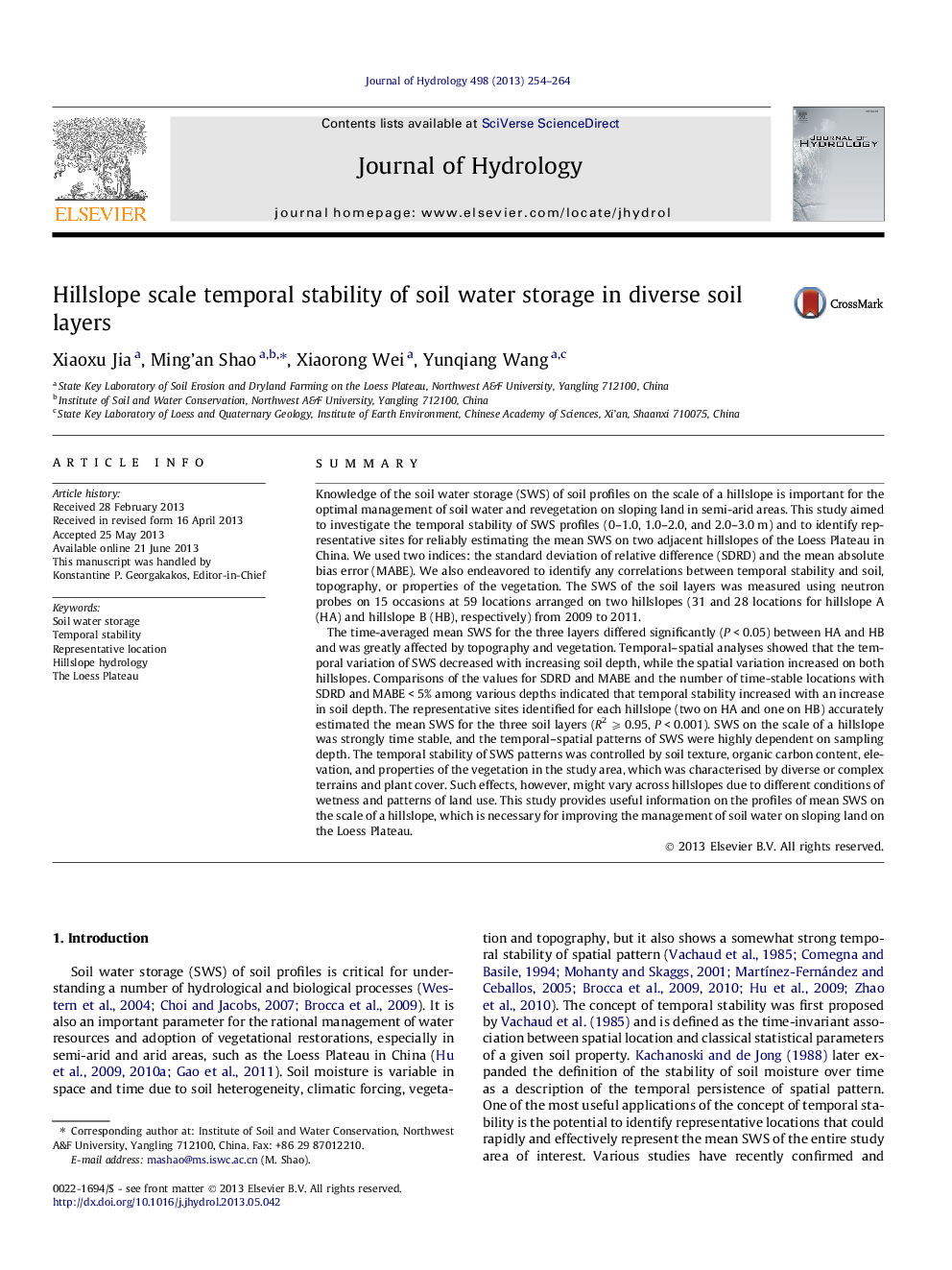| کد مقاله | کد نشریه | سال انتشار | مقاله انگلیسی | نسخه تمام متن |
|---|---|---|---|---|
| 6413585 | 1629950 | 2013 | 11 صفحه PDF | دانلود رایگان |

- Analysed soil water storage (SWS) temporal stability in three layers on two hillslopes.
- Spatial variation in mean SWS increased with increasing soil depth.
- At greater depths, soil water storage tended to be more temporally stable.
- A representative site can estimate mean soil water storage on a hillslope.
- Strong temporal stability due to texture, organic carbon, elevation, vegetation.
SummaryKnowledge of the soil water storage (SWS) of soil profiles on the scale of a hillslope is important for the optimal management of soil water and revegetation on sloping land in semi-arid areas. This study aimed to investigate the temporal stability of SWS profiles (0-1.0, 1.0-2.0, and 2.0-3.0 m) and to identify representative sites for reliably estimating the mean SWS on two adjacent hillslopes of the Loess Plateau in China. We used two indices: the standard deviation of relative difference (SDRD) and the mean absolute bias error (MABE). We also endeavored to identify any correlations between temporal stability and soil, topography, or properties of the vegetation. The SWS of the soil layers was measured using neutron probes on 15 occasions at 59 locations arranged on two hillslopes (31 and 28 locations for hillslope A (HA) and hillslope B (HB), respectively) from 2009 to 2011.The time-averaged mean SWS for the three layers differed significantly (P < 0.05) between HA and HB and was greatly affected by topography and vegetation. Temporal-spatial analyses showed that the temporal variation of SWS decreased with increasing soil depth, while the spatial variation increased on both hillslopes. Comparisons of the values for SDRD and MABE and the number of time-stable locations with SDRD and MABE < 5% among various depths indicated that temporal stability increased with an increase in soil depth. The representative sites identified for each hillslope (two on HA and one on HB) accurately estimated the mean SWS for the three soil layers (R2 ⩾ 0.95, P < 0.001). SWS on the scale of a hillslope was strongly time stable, and the temporal-spatial patterns of SWS were highly dependent on sampling depth. The temporal stability of SWS patterns was controlled by soil texture, organic carbon content, elevation, and properties of the vegetation in the study area, which was characterised by diverse or complex terrains and plant cover. Such effects, however, might vary across hillslopes due to different conditions of wetness and patterns of land use. This study provides useful information on the profiles of mean SWS on the scale of a hillslope, which is necessary for improving the management of soil water on sloping land on the Loess Plateau.
Journal: Journal of Hydrology - Volume 498, 19 August 2013, Pages 254-264